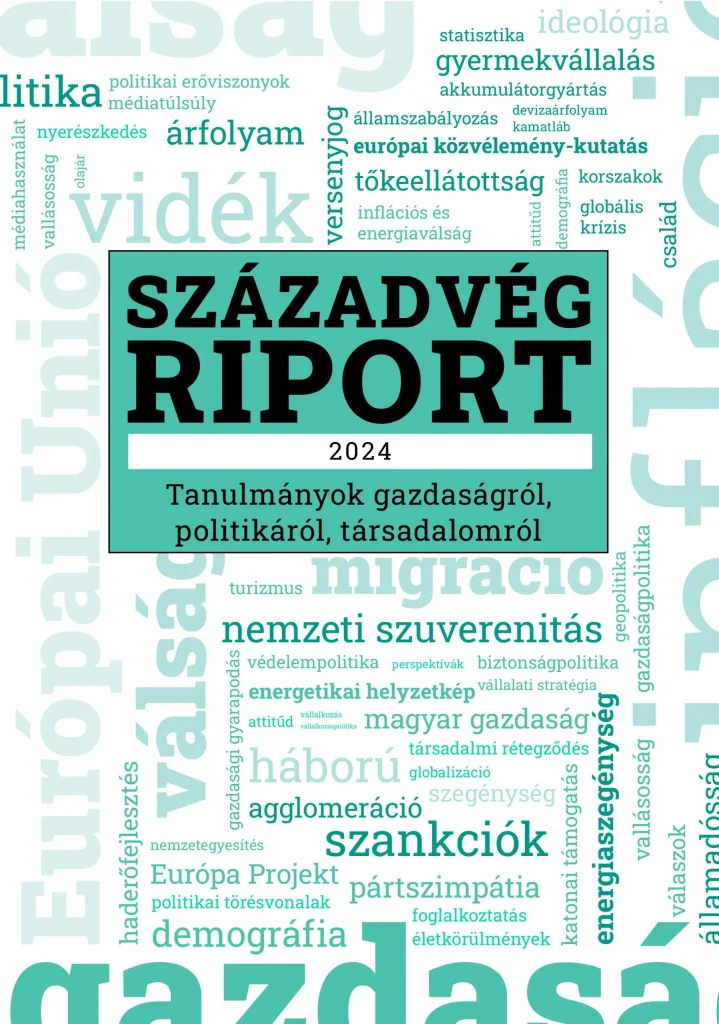At its December meeting, the Monetary Council of the central bank left the base rate unchanged from the previous month, slowing monetary easing. The base rate in Hungary therefore remains at 6.5%.
In October, retail sales increased by 3.6% year on year in terms of both raw and calendar-adjusted data. Within this, compared to the same period of the previous year, sales increased by 4.8% in specialised and non-specialised food shops and by 3.3% in non-food retailing, while sales decreased by 0.1% in automotive fuel retailing.
The value of the SZIGMA CI indicator, which provides feedback on the current state of the Hungarian economy, was -0.106 up to November 2024, which is still below trend, but is approaching the historical trend level. This means that, while the Hungarian economy is still growing at a rate below its historical trend, there has been a slight improvement. The coming months will show whether this improvement was a one-off or the start of a trend.
The other indicator, SZIGMA LEAD, a short-term indicator for the future of the Hungarian economy, forecasts below-trend growth by the end of the forecast horizon. The current forecast foresees rapid and strong growth in the first half of the period, while the second half forecasts a sharp decline.
In November 2024, consumer prices rose by 3.7% on average year on year.
In December Hungarian people held HUF 1,498.5 billion more in government securities compared to January
On 20 December 2024, the total value of “MÁP Plusz” government securities held by retail investors was HUF 652.6 billion after a HUF 13.4 billion decrease from the HUF 666.0 billion level in the previous month. In addition, the cumulative value of PMÁP securities was HUF 7,045.2 billion, while the cumulative value of the “Bónusz” Hungarian Government Bonds was HUF 1,195.0 billion. The total value of the 1MÁP securities is HUF 420.7 billion, that of Treasury Savings Bills is HUF 531.5 billion and that of FixMÁP securities is HUF 967.4 billion. In addition, funds held in “Baby” Bonds amounted to HUF 392.3 billion and funds held in Printed MÁP Plus amounted to HUF 103.9 billion. The retail stock of FixMÁP increased by HUF 69.4 billion and that of “baby bonds” (babakötvény) by HUF 40.9 billion compared to the previous month. The total stock of government securities held by retail investors stood at HUF 11,308.7 billion at the end of December 2024, up from HUF 9,810.2 billion at the beginning of 2024, meaning that people held HUF 1,498.5 billion more in government securities than in the first month of 2024.
The SZIGMA (abbreviation of the Hungarian name “Századvég Index a Gazdasági Momentum Alakulásáról”, in English: Századvég Index of the Development of Economic Momentum) is a simultaneous and preliminary indicator system developed by Századvég for the Hungarian economy.
It is crucial for economic policymakers and analysts to have an accurate picture of the state of the economy, but statistical data are often available with considerable delays. In contrast, the SZIGMA indicators provide information on the economic cycle and the business cycle within 30 days of the reference month, on a monthly basis.
The indicator system consists of two indicators, the SIGMA CI, which summarises the current state of the economy, i.e. information extracted from simultaneous variables, and the SIGMA LEAD, which provides preliminary information on the expected economic trajectory. A positive CI index means that economic growth is above the historical trend, and a negative CI index means that growth is below the historical trend. The SIGMA LEAD indicator provides a short-term forecast for a 9-month period. If the SIGMA LEAD indicator is positive, growth is expected to be above trend in 9 months’ time (i.e. three quarters of a year later), while if it is negative, growth is expected to be below trend in the near future.
